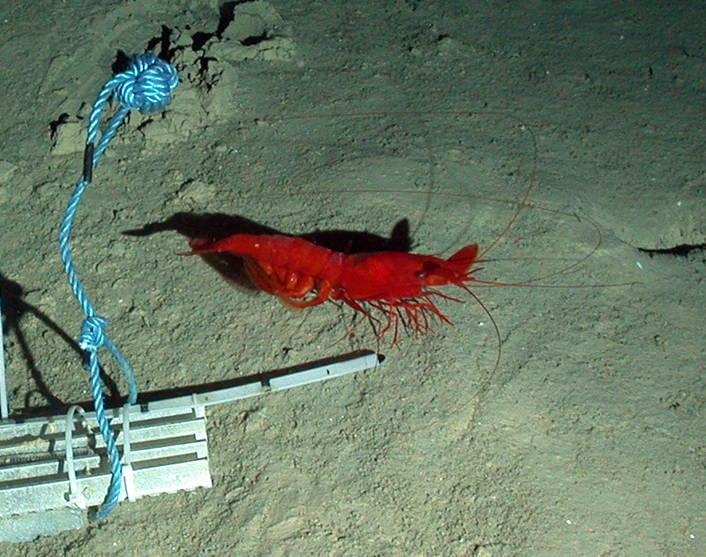“The beginning of wisdom is to call things by their proper name” Confucius
… but sometimes, giving a name to something is easier said than done. When we are looking at video and photographs of the deep-sea floor, we see the animals that live there, but determining what species they are is tricky. A new publication by NOC scientists provides a guide to getting the names right.
We need to be able to identify the animals in our images, and that need is growing rapidly as we survey more and more of the deep sea using Remotely Operated Vehicles (ROVs), Autonomous Underwater Vehicles (AUVs) or the fixed-point still and video camera systems at EMSO Regional Facilities, to assess the biodiversity of these remote ecosystems.
When we are unsure about the identity of an animal, it is often given a name such as ‘big red prawn?’, rather than the full scientific name we use when its identity is clear. When we see the same species of animal again, even though we don’t know what it actually is, it is important that we give it the same name. This, according to Confucius, is the beginning of wisdom.
By making sure we use the same name in the same way, we can make sure that we have good biodiversity data, and that these data can be easily understood and shared. The new guide (Horton et al., 2021) provides rules for the use of open nomenclature signs, a way of indicating the level of certainty in an identification, in image-based biodiversity studies. This is one of numerous initiatives to improve biodiversity data collection and to make them more useful to other researchers, environmental managers and policy makers. Lead author, Dr Tammy Horton said “Image-based biodiversity work is increasingly common but will always have limitations to the level of certainty in species identification. This is particularly critical in deep-sea studies where most of the animals are poorly known and we often encounter new species that have not been described before. Developing these clear rules for the use of open nomenclature will improve the clarity, precision, and comparability of biodiversity data.”
Drawing on expertise and experience from NOC, University of Southampton, the Charles Darwin Research Station (Ecuador), National Geographic Society (USA), Flanders Marine Institute (Belgium), and the Intergovernmental Oceanographic Commission (Belgium), the guide provides a simple flow chart to help in deciding on the term to use and at which level of identification, and also gives examples of recommended use of these terms for input to online databases (e.g. Ocean Biodiversity Information System), and in the preparation of catalogues of the fauna of an area.
Recommendations for the standardisation of open taxonomic nomenclature for image-based identifications.
Tammy Horton, Leigh Marsh, Brian James Bett, Andrew Russell Gates, Daniel O B Jones, Noëlie M.A. Benoist, Simone Pfeifer, Erik Simon-Lledó, Jennifer Durden, Leen Vandepitte, Ward Appeltans.
Frontiers in Marine Science, Deep-Sea Environments and Ecology. 08 February 2021
https://doi.org/10.3389/fmars.2021.620702
The work was, in part, funded by EMSO-Link.
Figure caption: A ‘big red prawn’ formally known as Cerataspis monstrosus – but can you be sure just from a photograph? (photo by National Oceanography Centre)


